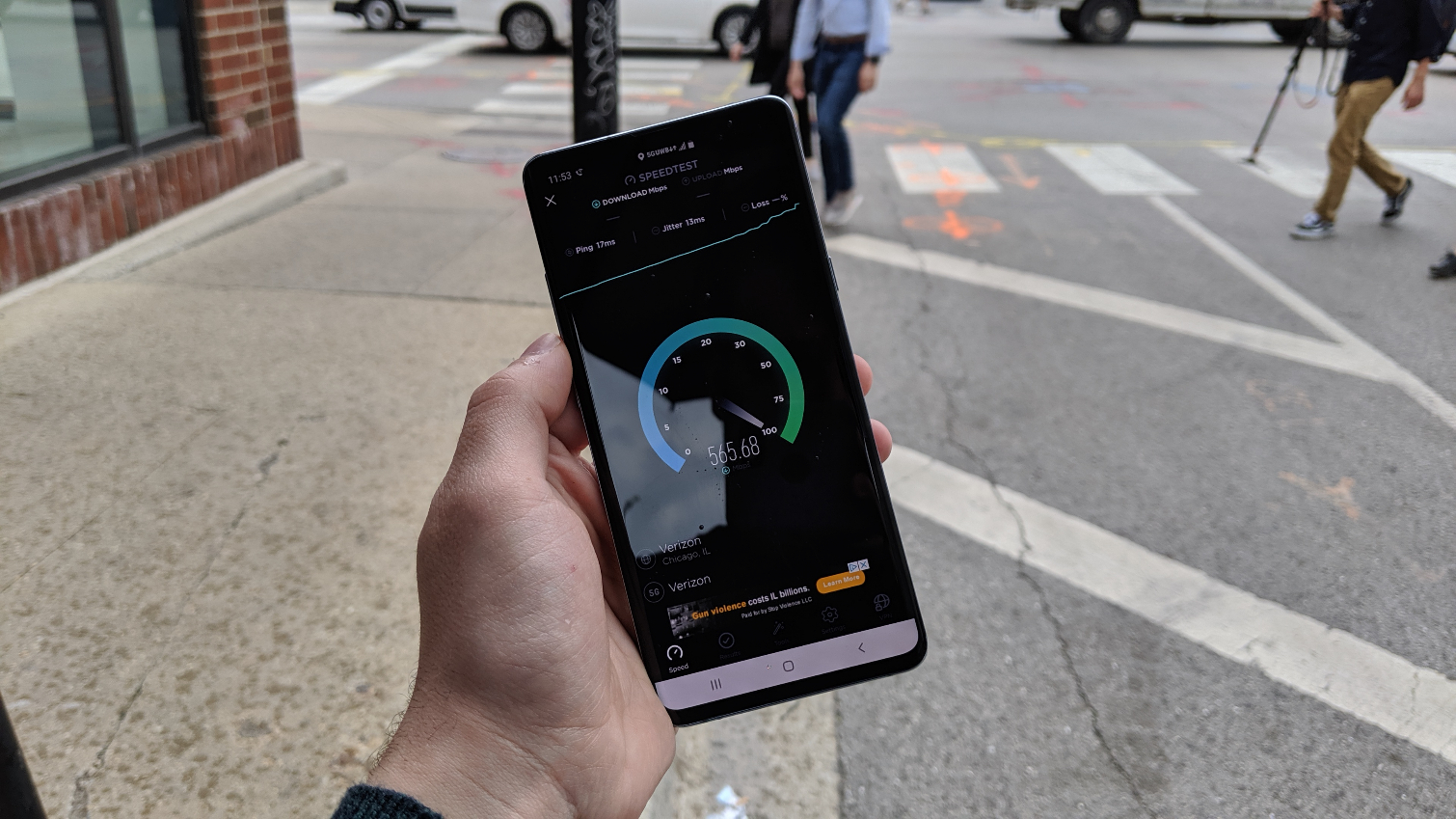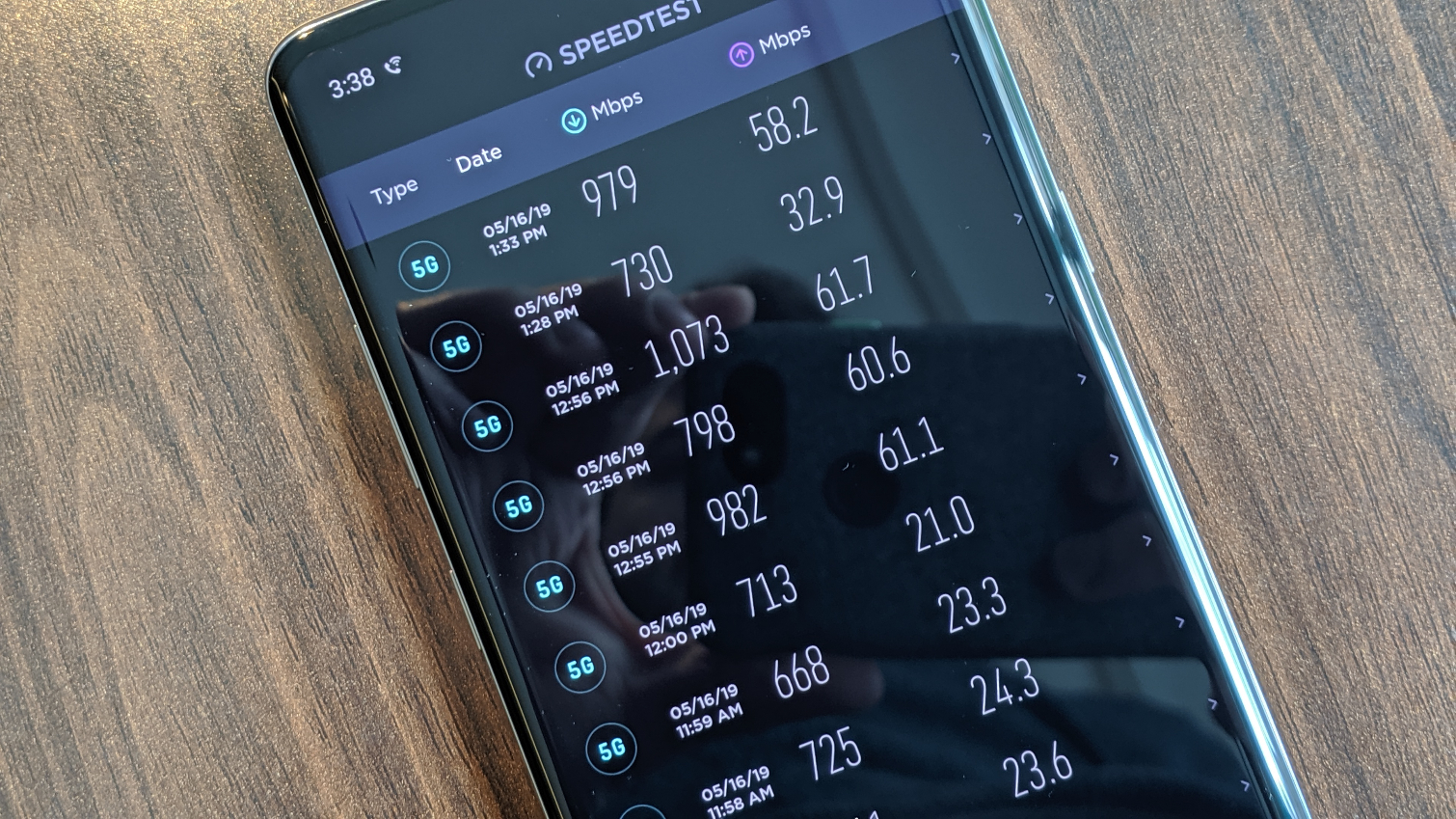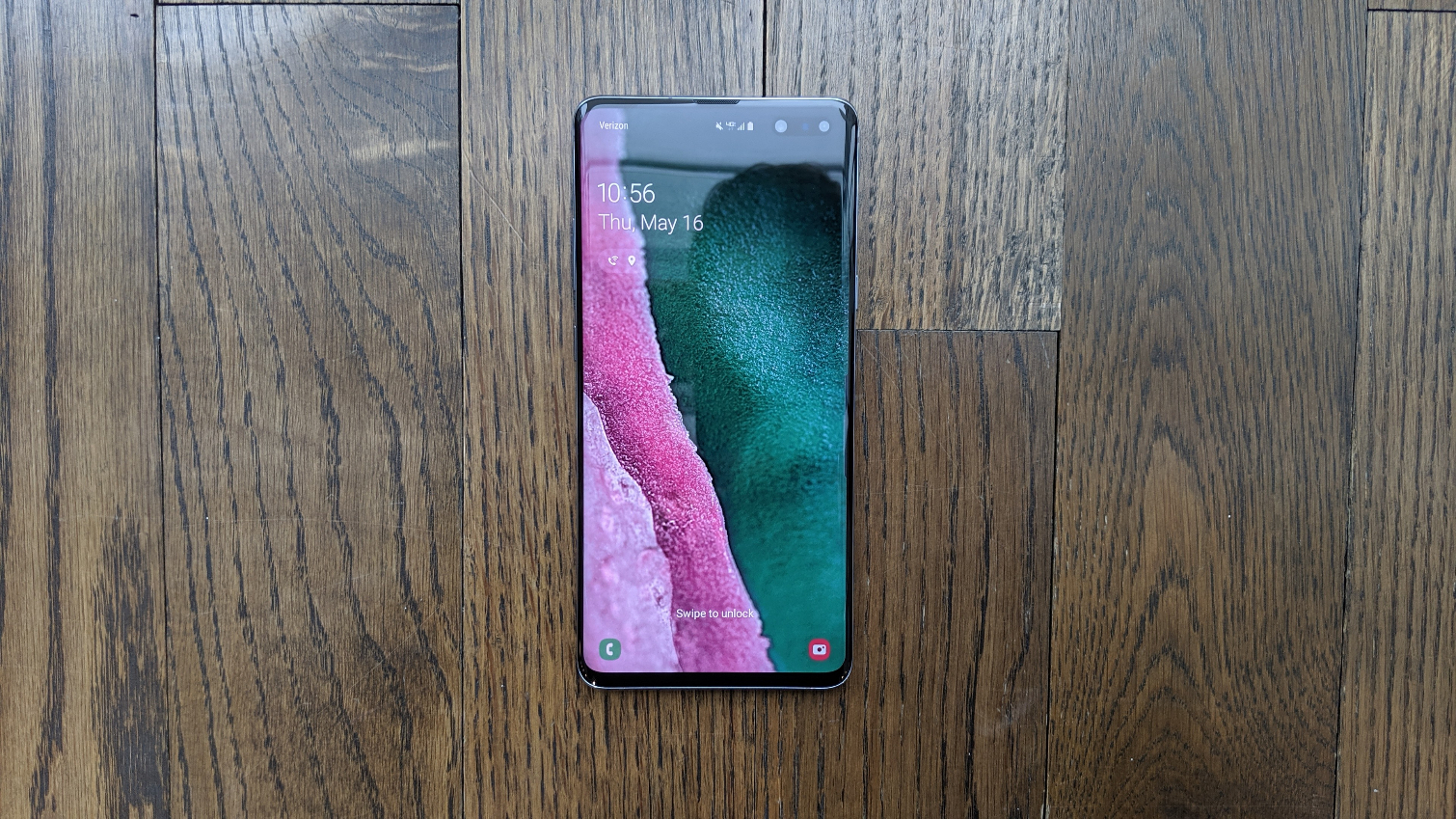Galaxy S10 5G Tested: Crazy 1 Gbps Speeds on Verizon's Network
While the Galaxy S10 5G is very pricey, the speeds it offers must be seen to be believed.
CHICAGO — Several months after the Galaxy S10’s launch, Samsung has followed up with a 5G model. Available today (May 16) for $1,299, the Galaxy S10 5G can run on Verizon’s just-launched 5G Ultra Wideband network.
And while the service is still very much in its infancy and doesn’t matter for you quite yet, the speeds it offers are certainly real. Like breaking-the-1 Gbps-barrier real.

Armed with a Galaxy S10 5G in hand, we circled Chicago’s River North and West Loop neighborhoods. And what we found, in the midst of a typically breezy day in the city, didn’t disappoint. Samsung’s device topped 1 Gbps on multiple occasions and mostly hovered around 700 Mbps mark for the duration of our three hours of testing.
While that might not be the reliable gigabit-class result most carriers have been promising, it is a marked improvement from our previous 5G test in the Windy City in April, where our Moto Z3 and accompanying 5G Mod primarily pulled down speeds between about 170 Mbps and 460 Mbps. Verizon’s network is indeed improving.
On the corner of Jefferson and Madison, next to Presidential Towers in the West Loop, we averaged 917 Mbps downstream across five tests within Ookla’s Speedtest app. The highest result was 1.08 Gbps, while the lowest was 730 Mbps. Verizon's LTE service in Chicago is very, very fast, but even the 150 Mbps we got from a reference LTE device couldn't compare with 5G's blistering throughput. (Uploads aren’t possible to test at the moment, as Verizon’s current non-standalone 5G infrastructure is relying on LTE for uploads to maximize overall traffic reliability.)
- More: Incredible speeds need a fast VPN to match

Other locations offered similar peaks, though were a bit less consistent in terms of individual results. Underneath an overpass on the corner of Canal and Randolph, our S10 5G hit as high as 1.07 Gbps, but its 370 Mbps session was one of the lowest of the afternoon. In fact, halfway during testing at this location, we lost 5G service entirely, and only got it back after rebooting the device several times.
At the moment, that’s probably the biggest glaring issue with Verizon’s 5G service. I was delighted to watch as my S10 5G downloaded a 33-minute, 158MB episode of Netflix’s Nailed It in an astonishing 5.6 seconds, and absolutely floored when it pulled down the entire first season of The Chilling Adventures Of Sabrina in 1 minute and 1 second. For comparison’s sake, the regular old LTE Galaxy S10 I was carrying needed 10 minutes and 29 seconds to download a single episode of the teenage witch’s antics. However, you can only expect those results in the most ideal of conditions.
For one, you have to be outside — Verizon’s 5G network doesn’t work indoors, and is hampered to a certain extent by windows. And you have to be within sight of a 5G node on a lamppost or telephone pole, but not directly under it. You can’t have any physical obstructions in the way, and you even have to be mindful of how you hold the phone, making sure at least a few of its antenna bands are exposed.

And yet, even after all this, you might find that your S10 5G just refuses to talk to the 5G node that is plainly in front of it. Our device averaged 549 Mbps at the intersection of Grand and Franklin after running Ookla seven times. And at a certain point, it just fell back to LTE and remained there for several minutes. We were able to download PUBG Mobile — a 1.8GB game — in 2 minutes and 17 seconds before losing the signal, and honestly I as impressed with the performance as I was relieved that the stars aligned so it could happen.
Outlook
Make no mistake — the Galaxy S10 5G (which you can buy today), runs on Verizon’s 5G network (which is live today), and if you’re lucky enough to have the device and be in an area where you can get the most out of it, it will deliver amazing speeds that are several times faster than the status quo. That excites me, and it should excite you.
However, there’s still the problem of ubiquity — or rather, the lack thereof. Verizon’s 5G network is only live in Chicago and Minneapolis at the moment, and will hit another 20 before the year closes. That’s one issue, and it’ll be familiar to anyone that can recall way back to the slow rollout of LTE nearly a decade ago.
But the other problem is that if you want the magic 5G promises, you have to jump through hoops and you have to use your device a certain way. In time, 5G cells will be deployed everywhere, indoors and out, and you won’t have to stand on a street corner to download an entire season of your favorite TV show in record time. Until then, though the S10 5G ultimately offers a thrilling preview of a future that hasn’t arrived in a tangible way quite yet.
Sign up to get the BEST of Tom's Guide direct to your inbox.
Get instant access to breaking news, the hottest reviews, great deals and helpful tips.
Adam Ismail is a staff writer at Jalopnik and previously worked on Tom's Guide covering smartphones, car tech and gaming. His love for all things mobile began with the original Motorola Droid; since then he’s owned a variety of Android and iOS-powered handsets, refusing to stay loyal to one platform. His work has also appeared on Digital Trends and GTPlanet. When he’s not fiddling with the latest devices, he’s at an indie pop show, recording a podcast or playing Sega Dreamcast.
